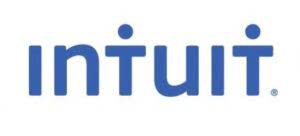Consolidation in Accounting: A Comprehensive Guide
(Effectively what you are doing is adjusting the closing inventory that is part of the cost of sales figure). Answer Let’s consider each of the investments in turn to determine if control exists and, therefore, if they should be accounted for as a subsidiary. A typical OT question may describe a number of different investments and you would need to decide if they are subsidiaries – i.e. if control exists. The equity investors at risk, as a group, lack the characteristics of a controlling financial interest. The IFRS Foundation is a not-for-profit, public interest organisation established to develop high-quality, understandable, enforceable and globally accepted accounting and sustainability disclosure standards. Purchase differentials need to be amortized over their useful life; however, new accounting guidance states that goodwill is not amortized or reduced until it is permanently impaired, or the underlying asset is sold.
What Are Consolidated Financial Statements?
- These systems have historically been deployed in on-premises data centers but are now available as cloud-based accounting solutions for consolidation and other financial processes.
- Consolidation accounting is a critical process for businesses with multiple subsidiaries or investments in other companies.
- The parent company recognizes dividend income from the subsidiary on the income statement but does not record a proportional share of the subsidiary’s earnings.
- If the parent and NCI pay more than the fair market value of the net assets (assets minus liabilities), the excess amount is posted to a goodwill asset account, and goodwill is moved into an expense account over time.
- Consolidation is also defined as a set of financial statements that presents a parent and a subsidiary company as one company.
- When reports are completed, they’re used by shareholders to establish overall financial health and performance, along with potential risks and areas for strategic improvement.
Always start by reading the question requirement carefully to determine what is being asked for. Had the question asked for the consolidated cost of sales figure, the next step would have been to identify the provision for unrealised profit (PUP). Note that although we refer to this as a provision, it is not a liability but an adjustment to the asset, fixed assets inventory.
How can automation improve the financial consolidation process?
Equity consolidation is an accounting method used if the investor does not have full control over the subsidiary. For an investor to significantly influence the company, they should own between 20-50% of the shares. Likewise, in scenarios where the investor controls less than 20% of shares and is significant, one uses equity consolidation. The parent company’s investment account balance related to the subsidiary is eliminated in consolidation. Any differential between the investment account balance and the parent’s share of the subsidiary’s equity is used to adjust additional paid-in capital and retained earnings. For example, if Parent Co. acquires Subsidiary Co. for $1 million, and Subsidiary Co. has net assets with a fair value of $700,000, there would be $300,000 of goodwill generated from the acquisition.
Consolidation in Finance
Answer A completely omits the elimination of the intra-group balances and answer B does not cancel the corresponding payable within liabilities. While ASC 810 provides several conditions to consider in the VIE assessment, the legal entity must meet only one of these conditions to be a VIE. Periods of consolidation can be found in price charts for any time interval, and these periods can last for days, weeks, or months. Technical traders look for support and resistance levels in price charts and then use these levels to make buy and sell decisions. A consolidation pattern could be broken for several reasons, such as the release of materially important news or the triggering of a succession of limit orders.
The treatment of non-controlling interests has evolved, with current standards requiring that they be reported within equity, separate from the parent’s equity. This approach underscores the fact that non-controlling interests have a claim on the net assets of the subsidiary. The reporting of non-controlling interests at fair value during business combinations Accounting for Churches further enhances the accuracy of the financial statements, providing a clearer picture of the subsidiary’s value to all stakeholders. Consolidating small entities that have few transactions and standard structures can be a piece of cake. On the other hand, multinationals with enormous company structures can be a headache. Identifying relationships between entities, choosing a consolidation method and making sure any redundant transactions that would be considered double accounting is removed.
to 50% ownership—associate company
Applying these rates correctly requires a decent level of understanding of accounting standards like IFRS and US GAAP. For a comprehensive discussion of the accounting and financial reporting considerations related to applying the guidance in ASC 810, see Deloitte’s Roadmap Consolidation—Identifying a controlling financial interest. The determination of whether a legal entity is a VIE ultimately governs the consolidation model the reporting entity must apply. If the legal entity is a VIE, the reporting entity uses the VIE model to assess whether to consolidate; otherwise, it uses the voting interest entity model. A good rule of thumb is that most arrangements that are on the credit side of the balance sheet (e.g., equity and debt) are variable interests because they absorb variability as a result of the legal entity’s performance. However, there are additional considerations for more complex arrangements (e.g., derivatives, leases, and decision-maker and other service-provider contracts).
Consolidate: What It Means in Business and Finance
For this method of consolidation accounting, the parent company owns more than 50% of the consolidation accounting subsidiary. Therefore, the reporting and accounting of the subsidiary are under the complete control of the parent company. In financial accounting, to consolidate is for all subsidiaries to report in financial statements under the umbrella of a parent company. In business, to consolidate is for smaller companies to unite with larger companies through mergers and acquisitions (M&A). In the context of financial accounting, the term “consolidate” often refers to the consolidation of financial statements wherein all subsidiaries report under the umbrella of a parent company. Consolidation also refers to the union of smaller companies into larger companies through mergers and acquisitions (M&A).






